Anybody in Australia who pays even a little attention to old postcards will soon encounter some of the products of the Rose Stereograph Company. The publishing output of this long-lived firm (which operated from about 1880 until it went into liquidation in 2017) was phenomenal, and when the remains of what must have been a vast photographic archive went on sale in June 2021 with Lloyds Auctions, it attracted media attention across Australia.
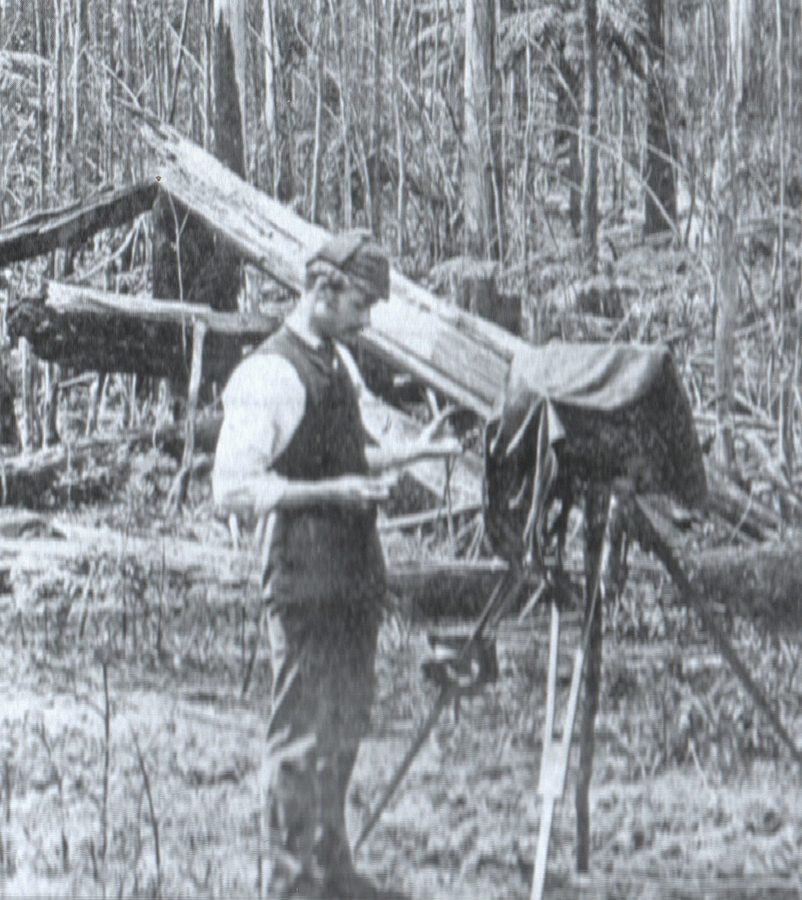
According to a brief history by postcard collector Leo Fitzgerald, the Rose story began when Cornish sea captain William Rose came to the Victorian Ballarat gold fields from California and married Grace Ash at Ballarat in 1861″. The couple’s son, George, was born in 1862 at the town of Clunes. He worked in his father’s shoe shop in Chapel Street, Prahran, between 1877 and 1880 (apparently producing his earliest photos from those premises) and began spending his Sundays selling photos to picnic parties in the Dandenong hills. Finding his niche in photography, he moved to a new address at Armadale and founded his own firm publishing stereographic views. Over the years he travelled to many countries and recorded numerous important historic events with his stereographic camera equipment, opening offices in Sydney, Wellington and London. His images from Korea have become especially celebrated in Korea, where they represent an extremely rare glimpse of the nation in 1904, before the onset of the destruction wrought by the wars of the 20th century.
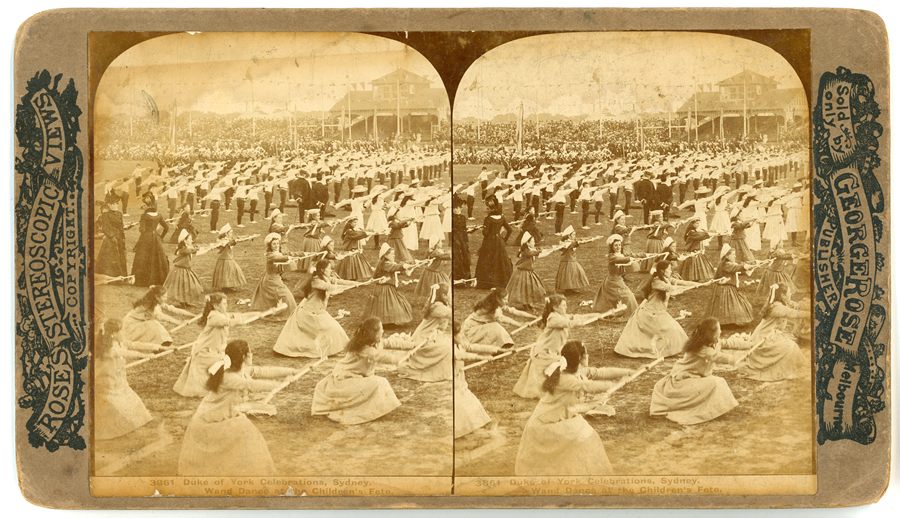
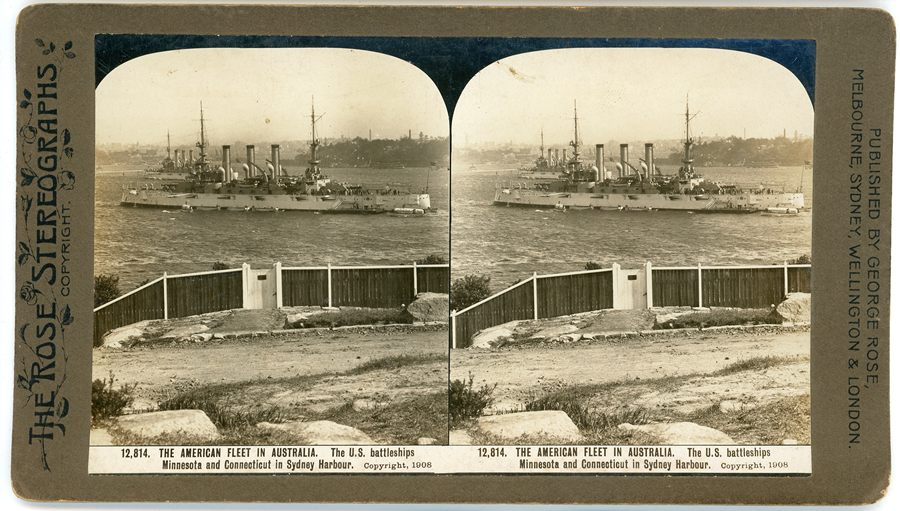
In the early 20th century, as interest in stereographs waned, George Rose embraced the burgeoning postcard craze and by the end of The Great War his firm had produced about 2000 different cards. Collector and researcher Ron Blum, whose excellent books built on Leo Fitzgerald’s work, wrote that George’s son Walter took over the business sometime before 1931, selling it in that year to long-time employees Edward Gilbert and Herbert Cutts. From this time the extensive collection of original negatives the firm had accumulated over the years began to be dispersed – many of them overseas. A considerable number found their way into the collection of the Keystone View Company in the USA, and according to Ron Blum about 3600 Rose negatives are now housed in the California Museum of Photography.
George’s wife, Elizabeth, died in 1929, and both George’s sons died before him. With no longer any legal interest in the company he had founded, George kept on taking photographs for the old firm, travelling around Australia in a mobile darkroom and camping along the way. He worked almost until his death in 1942, aged 80.
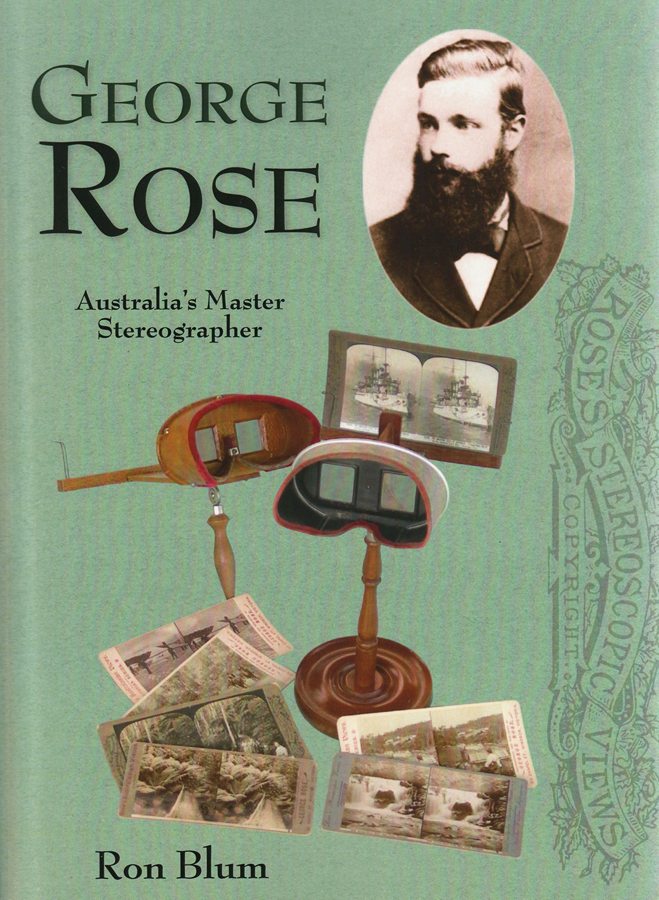
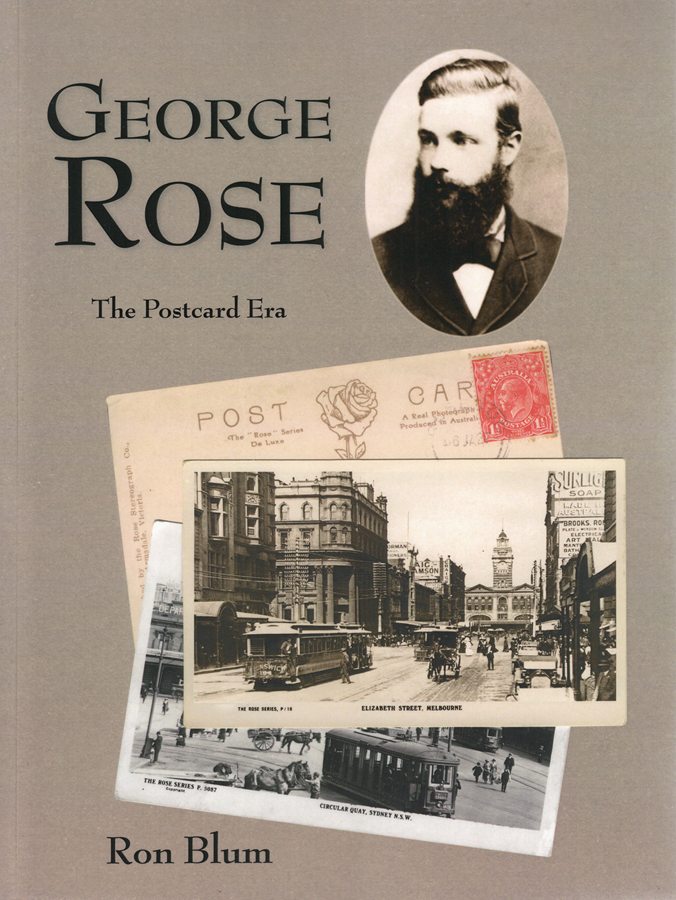
The Rose Stereographic Company continued under the stewardship of Herbert “Bert” Cutts, who brought his son Neil into the business in the 1950s. Bert died in 1962. In an article by John Schauble in The Melbourne Age on November 21, 1993, Neil Cutts reminisced about being on the road selling cards and taking photos for his father’s firm from his late teens. When he married and had three children the whole family travelled with him, “living in an old wooden caravan his father had trailed round the countryside before him”.
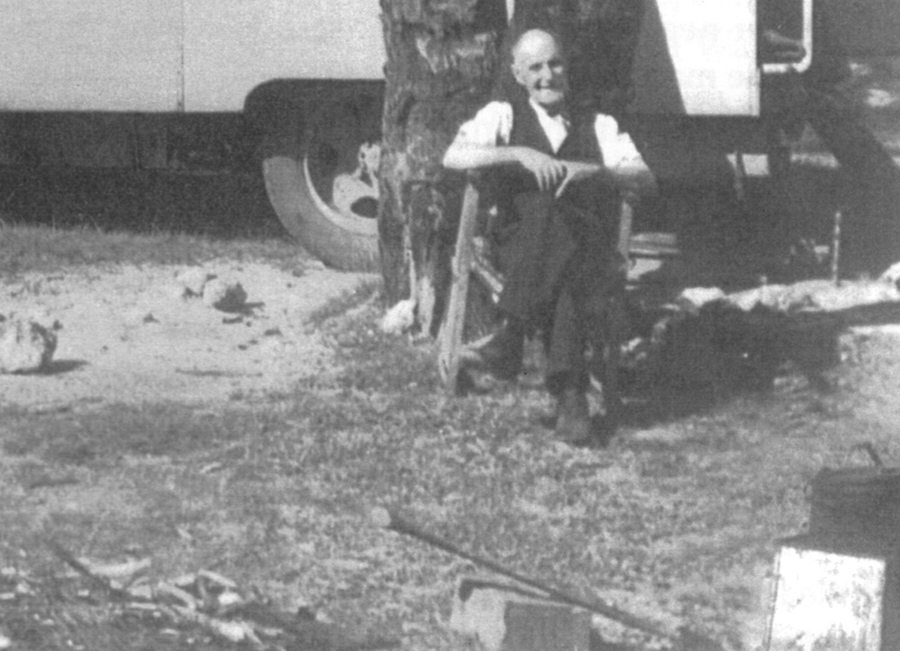
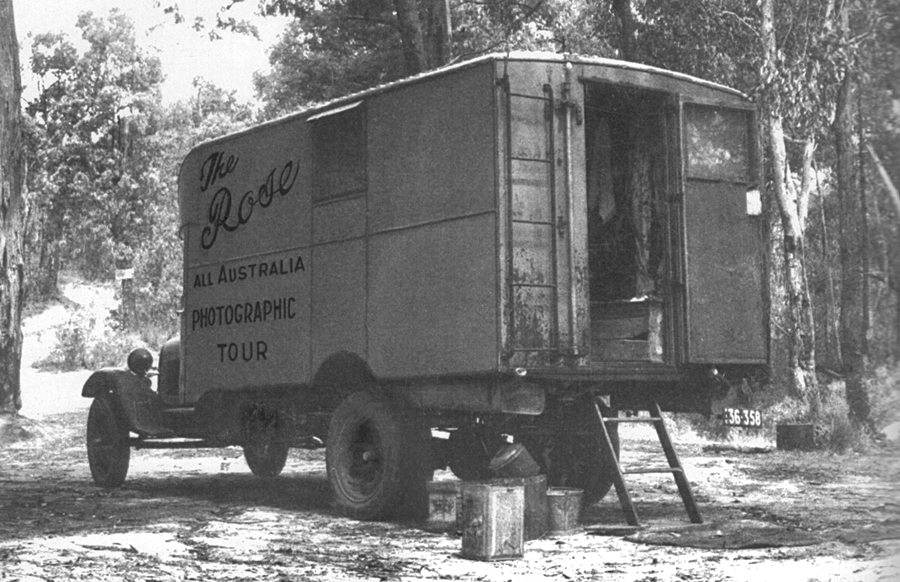
In an earlier article by Schauble in The Age (December 28, 1987), Neil Cutts discussed some aspects of the business of postcard production. By this time the company was relying heavily on its involvement in other branches of souvenir ware. Mr Cutts lamented “the day when every town could support a distinctive postcard of its own.” “These days many simply stock generic views or comic cards with the name of the town embossed on them.” In the 1993 article he explained that economies of scale demanded large print runs. “In days gone by, a run of nine dozen postcards could be produced for a particular customer. It was because of this that Rose Stereograph could produce cards showing the most obscure bends in the country roads of Victoria,” Schauble wrote.
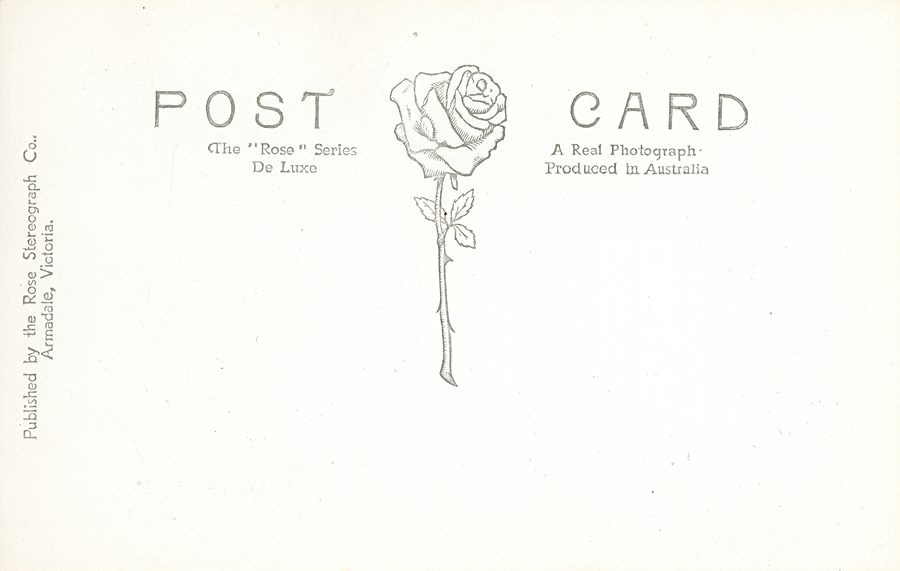
Leo Fitzgerald wrote that – at the time his article was written in a postcard collectors’ yearbook – “‘young’ Mr Neil Cutts runs the business with scores of ‘lines’ besides his full-colour postcards where a run may be 4000 for a single scene. Contrast this with George’s production schedule where a standard run for one view would be nine dozen with all the prints taken from a glass plate and all individually processed with precision and professionalism.”
In Schauble’s Age article of November 1993, it was reported that Neil’s two sons, Jeffrey and Stephen, were following the family footsteps, carrying camera gear as they travelled the country selling the company’s goods. Neil Cutts said he personally took about 80 per cent of the hundreds of new images each year, although only a selection was used. The company had produced black and white postcards until 1967 – the year the firm moved to new premises at Glen Waverley – though demand for these had fallen since the Melbourne Olympics in 1956.
“Recently the company has reproduced some of its old black-and-white cards, and they are selling steadily. Mr Cutts spent winter going through most of the old stock that moved with the company to its present premises a quarter of a century ago,” Schauble wrote. Those premises were “behind a nondescript shopfront” in Glen Waverley in Melbourne’s eastern suburbs. By the time of this article Mr Cutts’ Rose Stereograph Co was still selling more than a million cards a year but although cards were the mainstay of the business, it increasingly depended on spoons, fridge magnets, tea towels and other souvenirs.
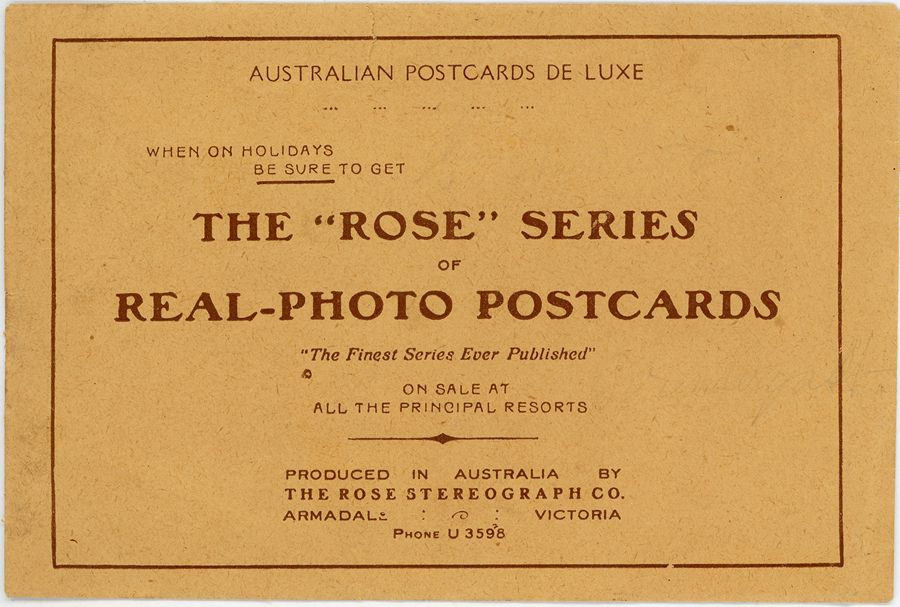
Schauble wrote that: “For the past 113 years the photographers of the Rose Stereograph Company have been making a continuous record of south-eastern Australia. It is a record that is probably unsurpassed. Some 17,000 of these images of ordinary places in the Victorian landscape have already found their way into the La Trobe Library’s collection. Others may be found stacked in the rear of the company’s modest Glen Waverley headquarters.” In 2005 the company celebrated its 125th anniversary, Neil Cutts died and in 2013 the firm, now run by his sons, moved again, this time to Mulgrave.
Ron Blum wrote in his book, George Rose, the Postcard Era, that a large quantity of Rose negatives and other material was lodged with a consignment seller in the 1960s, but the seller died before the material was sold. Some of this material “eventually filtered into the marketplace,” Blum wrote, adding that he had managed to acquire some of that material – “about one thousand stereo proof photographs”.
The Rose Stereograph Co Pty Ltd went into liquidation in March 2017. The name of the firm, however, was not entirely lost. Since the year 2000, a Cutts family partnership has used the registered trading name “Rose Stereograph Co”.
In 2021 the Rose Stereograph Co burst back into the news as Jeffrey and Stephen Cutts prepared to auction what some media reports described as “Australia’s most significant photographic collection”. According to reports, the brothers were surprised to stumble across a massive collection of more than 100,000 items dating back to 1880, stored in several dusty boxes, in the spare bedroom of a home in Victoria.
Stephen and Jeffrey Cutts said in a statement: “It is with great sadness that we say goodbye to a collection that spans five generations and 140 years”.
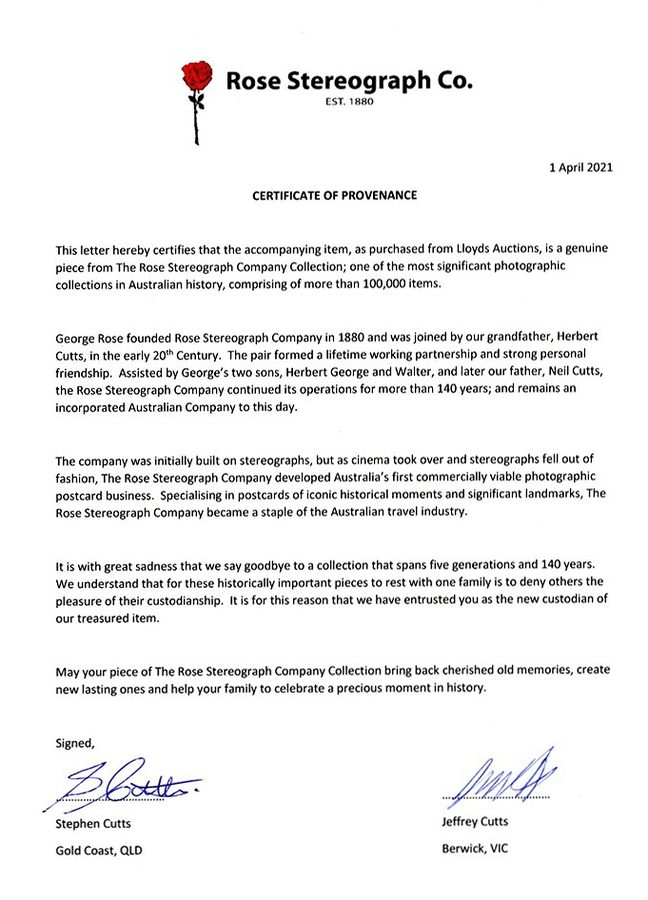
I watched the online auctions with some interest and noted no shortage of willing bidders, with some single glass plate negatives selling for several hundred dollars each. I was the successful bidder on a handful of lots, ending up owning just over a hundred film negatives of various scenes, including some of my home city of Newcastle, back in the late 1940s and early 1950s when the old electric tram network was still in operation on the city’s streets. Some of these were familiar to me, since I had seen them already in the form of postcards in my collection. I was glad to have had the chance to buy at least a few relics of the mighty Rose collection.
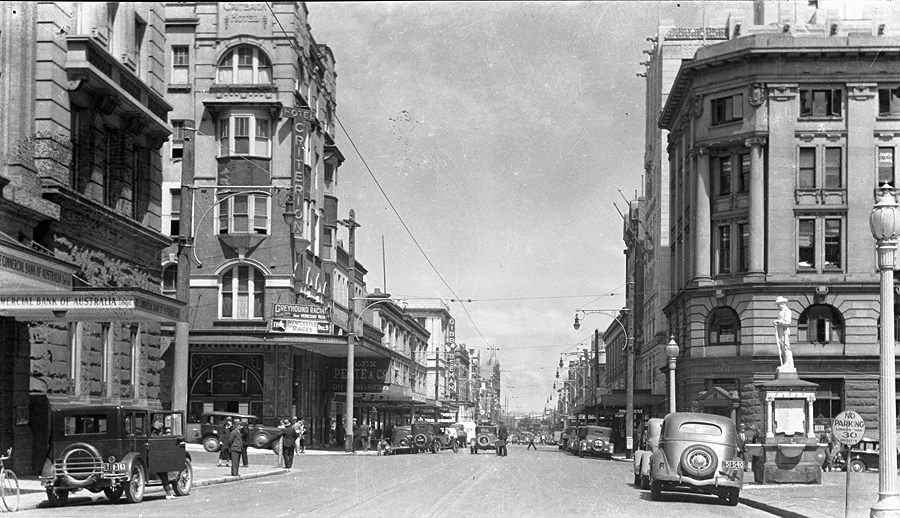
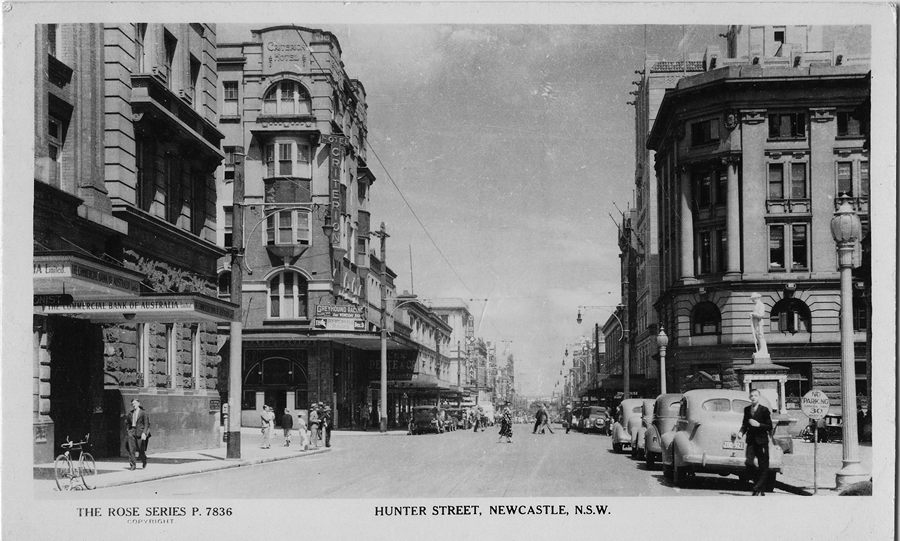


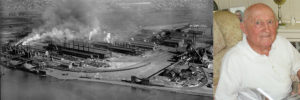

It was great to read thanks Stephen Cutts